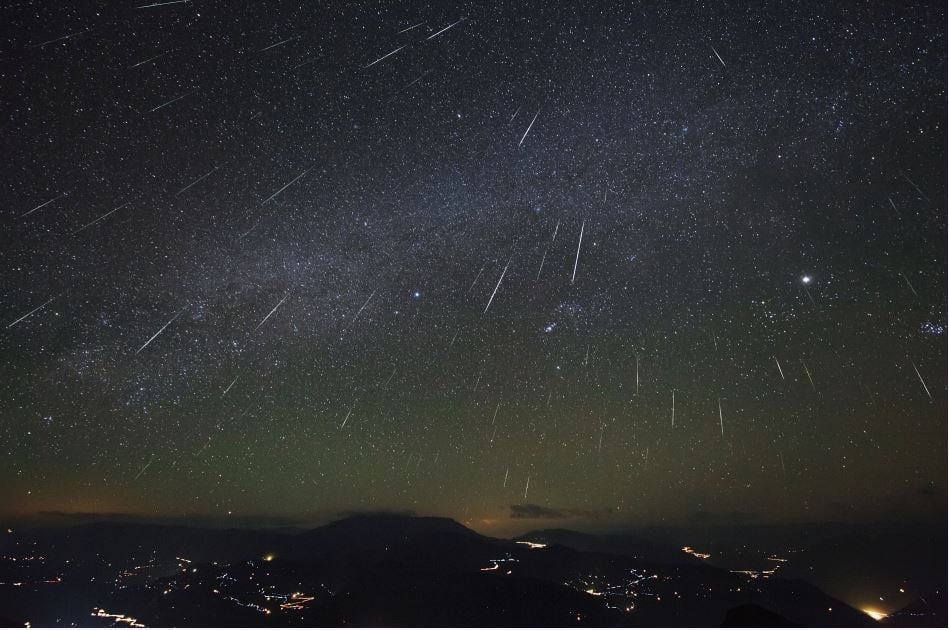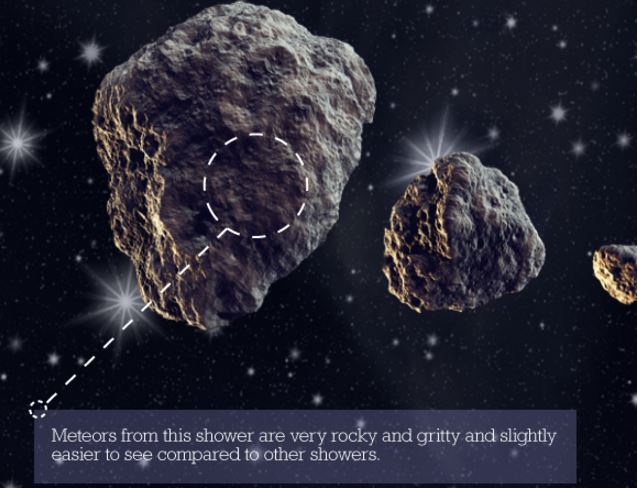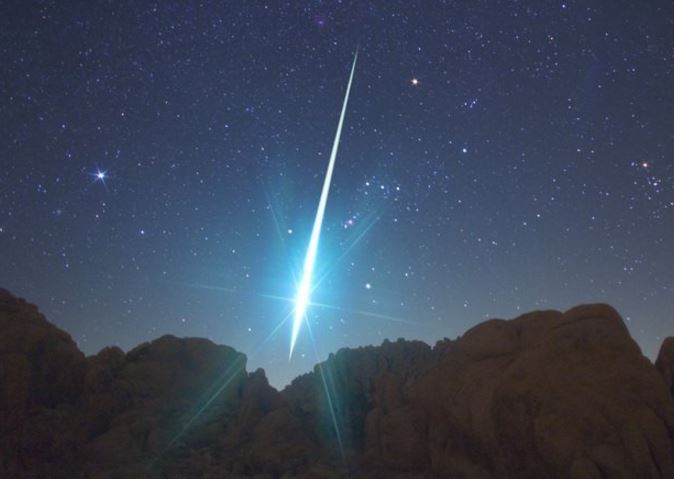The annual Geminid Meteor Shower is already visible in the night sky, and will become clearer and brighter in the coming days, bringing another spectacle in the run-up to Christmas. According to the UK’s Met Office, they will peak on the nights of the 13th and 14 of December, with 50 meteors per hour whizzing across the sky (NASA says over 100 per hour).
Planet Earth is once again going through the trail of debris left by 3200 Phatheon, an Apollo asteroid with an unusual orbit that was discovered on 11 October 1983 by the Infrared Astronomical Satellite.
The Genimid Meteor Shower, unlike others that come from comets, originates from an asteroid, this means they are very rocky and gritty, which makes them easier to see with the naked eye.
 Recorded near the peak in the early hours of December 14, 2012, this skyscape captures many of Gemini’s spectacular shooting stars. The careful composite of exposures was made during a 3 hour period overlooking the Dashanbao Wetlands in central China. (Image: apod.nasa.gov. Credit: Jeff Dai)
Recorded near the peak in the early hours of December 14, 2012, this skyscape captures many of Gemini’s spectacular shooting stars. The careful composite of exposures was made during a 3 hour period overlooking the Dashanbao Wetlands in central China. (Image: apod.nasa.gov. Credit: Jeff Dai)
The Geminids are one of the amateur astronomers’ favourites, because they streak across the sky at about 22 miles (35 km) per second every year at about the same time, as regular as clockwork. Scientists say the shower is intensifying every year.
Geminid Meteor Shower easy to see
When they come all you have to do is look up. You do not need to locate the Gemini constellation to catch the show. Even though the meteors start there, they will streak across the whole sky brightly, making them hard to miss. Astronomers say they can appear nearly anywhere in the night sky, and often have a yellowish hue.
All you will need are some warm clothes, perhaps a hot drink, a clear sky and a pair of eyes.
According to the Met Office:
“Starting on 4 December and ending on the 17 December, the Geminid meteor shower is for most, the highlight of the meteor shower calendar in 2015. The best time to view the Geminids is between sunset, local time and before sunrise.”
“Star gazers will be looking for clear, cloudless skies to have the best possible chance of catching a glimpse of the meteor shower. Ideally a location away from light pollution will be of benefit.”
NASA says the Geminids will peak on 14th December during daylight. However, you will still enjoy a decent spectacle the night before and after, starting at 9 pm until 10 pm.
The Geminids first started appearing in the mid-1800s, and at the time were pretty tame events, with only about ten to twenty meteors seen per hour.
Since then, they have grown to become one of the most major showers of the year.
 The Geminid Meteor Shower is one of the few showers, along with the Quadrantids, that originates from an atseroid. All the others come from comets. (Image: metoffice.gov.uk)
The Geminid Meteor Shower is one of the few showers, along with the Quadrantids, that originates from an atseroid. All the others come from comets. (Image: metoffice.gov.uk)
Geminid Meteor Shower viewing tips
They are best seen during the night and pre-dawn hours and are visible across the world due to a nearly 24-hour broad maximum.
The spectacle is one of the best opportunities for very young budding astronomers, because it starts around 9 to 10 pm.
 A photo of a Geminid fireball exploding over the Mojave Desert in 2009 (Image: science.nasa.gov Credit: Wally Pacholka / AstroPics.com/TWAN)
A photo of a Geminid fireball exploding over the Mojave Desert in 2009 (Image: science.nasa.gov Credit: Wally Pacholka / AstroPics.com/TWAN)
For best results, find an area far away from city or street lights.
NASA advises people to look up liying flat on their backs with feet facing south. After approximately 30 minutes in the dark, your eyes will adapt and you will start seeing meteors.
Of all the debris streams Earth passes through every year as it orbits the sun, the Geminids is by far the most massive, scientists say.
When we add up the quantity of dust in the Geminid stream, it outweighs other streams by factors of 5 to 500.
Met Office Video – Geminid Meteor Shower
